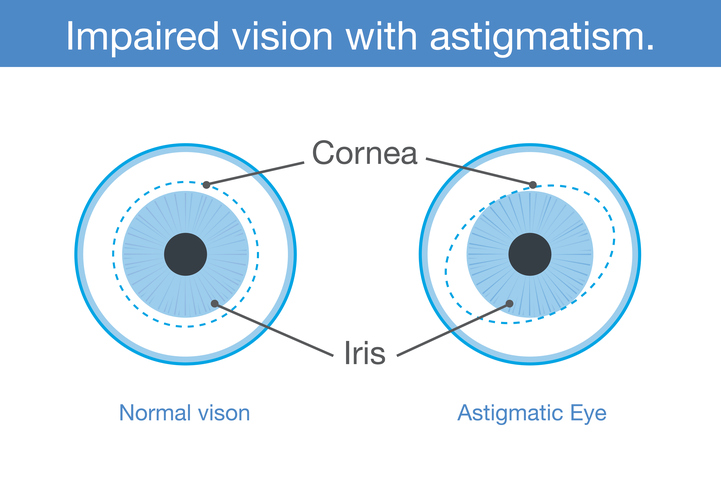What is astigmatism?
Astigmatism is a refractive error that occurs when the front surface of your eye (cornea) or the lens inside the eye is slightly irregular or cylindrical in shape. This results in blurred or distorted vision at any distance. It is not a disease, but a common visual condition.
What causes Astigmatism?
When the front surface of your eye (the cornea) or the lens inside the eye is more oval or cylindrical than round, light does not focus properly on the back inside surface of your eye (retina).
Astigmatism is caused by small differences in the growth and alignment of the eye’s components. In some cases, it may be hereditary or it may result from such factors as pressure of the eyelids on the cornea.
How common is it?
Most people have some degree of astigmatism. It is rare to have a perfectly round optical surface. Small amounts may not require correction with glasses. However, moderate to highly amounts will need corrective lenses.
Signs and symptoms
Even people with mild to moderate astigmatism will usually have blurred or distorted vision. They may experience:
• Headaches
• Eyestrain
• Fatigue
• Blurred vision
• Halos or distortion at certain distances
Diagnosis
A comprehensive eye examination by your optometrist will include tests to check for astigmatism.
Can Astigmatism be corrected?
Almost all levels of astigmatism can be optically corrected with properly prescribed and fitted eyeglasses or contact lenses. Laser surgery may be an option for appropriate cases.
Does it get progressively worse?
Astigmatism may change with time. Regular optometric care can, however, help to insure proper vision is maintained.
Source:
“Astigmatism” Ontario Association of Optometrists, Retrieved 13 June 2019. <https://www.optom.on.ca/OAO/Patients/Library/Astigmatism.aspx>

